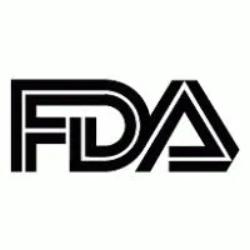
OR WAIT null SECS
Individuals Who Respond to Opioid Overdoses Need Support
While recent data indicate the potential to reduce opioid overdose mortality rates with naloxone distribution, authors call for increased support for those who witness an overdose.
With opioid overdoses escalating alongside the opioid epidemic, distributing the life-saving treatment naloxone more efficiently is an evidence-based approach that can reduce the mortality rates associated with opioid overdose. If a witness to an overdose has readily available naloxone, it can reverse the overdose and save the person’s life.
According to an article published in The Lancet Public Health, these witnesses serve an important role in combating the growing number of overdose deaths. The article, written by Charles Marks, MPH, PhD, and Karla D Wagner, PhD, from the School of Community Health Sciences, University of Nevada, cited the necessity of supporting people responding to overdoses to address the worsening opioid crisis.
In order for an overdose to be reversed, the authors explained that there has to be a witness who identifies the medical emergency, they must be able to quickly access naloxone, and then they must administer the naloxone.
Research Shows Potential to Reduce Overdose Mortality
The article pointed to a study that estimated how much naloxone needs to be distributed in each US state to have the resources to reverse at least 80% of witnessed opioid overdoses. The investigators discovered that to successfully meet this target, nearly every state needs to “scale-up naloxone distribution”.
The research evaluated different methods of naloxone distribution and indicated that community-based distribution had a greater impact than other sources, such as health care providers or pharmacies. Investigators pointed out that this could vary based on the community.
Ultimately, people who are most likely to witness and respond to an overdose are people who use drugs themselves, the evidence suggested. Authors said that the potential success of the community-based naloxone distribution scale-up that the research called for is dependent on the people who use drugs to be willing to assume an emergency responder role in this situation.
Because people who use drugs are typically associated with others who use drugs, the investigators’ target to reduce the amount of witnessed overdose deaths relies heavily on this population, according to authors.
“Although many people who use drugs gladly take up this role, as has been the case for many peer-staffed or peer-led interventions (eg, syringe distribution), doing so can also negatively affect responders by exposing them to grief, trauma, and stress associated with witnessing and responding to overdoses in their social networks,” authors wrote.
It’s “Ethically Imperative” to Support People Who Use Drugs
In addition to increasing efforts to distribute naloxone, it’s necessary to provide adequate support for those who take on this role. Authors called for further research investigating the effect that responding to overdoses has on an individual’s wellbeing, social ties, and willingness to continue responding.
“Ensuring the wellbeing of people who use drugs who accept this role is a crucial step in ensuring that naloxone distribution strategies are effective and sustainable,” authors wrote.
The article stated that the scale-up of naloxone distribution provides an opportunity for public health professionals and stakeholders to empower people who use drugs and all those who are affected by the overdose crisis. The research provided important estimates that could lead to the reduction of overdose deaths, however, authors explained that to achieve these estimates, the wellbeing of the people who are tasked with responding to overdoses must be ensured.
The harm reduction philosophy has historically been practiced in the US within these communities of people who use drugs. The philosophy is reliant on the idea that these people deserve to be cared for, valued, and supported, according to the article.
“If community-based naloxone distribution scale-up is to be a primary policy strategy for addressing the opioid overdose crisis, it is ethically imperative that we address the demands that these policies place on people who use drugs and that we provide support in line with what is already provided to other public health and emergency health professionals, who are also experiencing stress and burnout associated with the epidemic,” authors wrote.
The article, “Supporting people responding to overdoses” was published in The Lancet Public Health.


